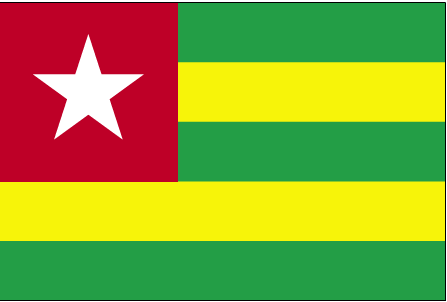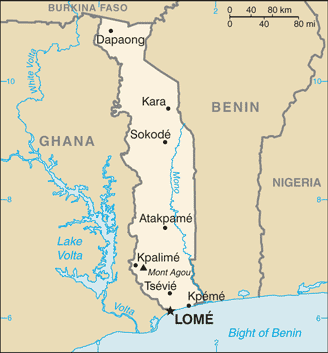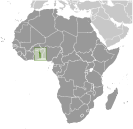
|
|
Advertisements:
People And SocietyNationality
Noun Togolese (singular and plural)
Adjective Togolese Ethnic groups
African (37 tribes; largest and most important are Ewe, Mina, and Kabre) 99%, European and Syrian-Lebanese less than 1% Languages
French (official, the language of commerce), Ewe and Mina (the two major African languages in the south), Kabye (sometimes spelled Kabiye) and Dagomba (the two major African languages in the north) Religions
Christian 29%, Muslim 20%, indigenous beliefs 51% Population World Ranking: 101
6,961,049 (July 2012 est.)
Note Estimates for this country explicitly take into account the effects of excess mortality due to AIDS; this can result in lower life expectancy, higher infant mortality, higher death rates, lower population growth rates, and changes in the distribution of population by age and sex than would otherwise be expected Age structure
0-14 years
40.9% (male 1,387,537/female 1,381,040) 15-64 years 56% (male 1,878,114/female 1,912,132) 65 years and over 3.1% (male 92,689/female 120,481) (2011 est.) Median age
Total 19.4 years
Male 19.1 years Female 19.6 years (2012 est.) Population growth rate World Ranking: 19
2.748% (2012 est.)
Birth rate World Ranking: 26
35.26 births/1,000 population (2012 est.) Death rate World Ranking: 109
7.78 deaths/1,000 population (July 2012 est.) Net migration rate World Ranking: 108
0 migrant(s)/1,000 population (2012 est.) Urbanization
Urban population 43% of total population (2010)
Rate of urbanization 3.9% annual rate of change (2010-15 est.) Major cities - population
LOME (capital) 1.593 million (2009) Sex ratio
At birth 1.03 male(s)/female
Under 15 years 1 male(s)/female 15-64 years 0.98 male(s)/female 65 years and over 0.77 male(s)/female Total population 0.98 male(s)/female (2011 est.) Maternal mortality rate World Ranking: 39
300 deaths/100,000 live births (2010) Infant mortality rate World Ranking: 45
Total 49.87 deaths/1,000 live births
Male 56.72 deaths/1,000 live births Female 42.82 deaths/1,000 live births (2012 est.) Life expectancy at birth World Ranking: 175
Total population 63.17 years
Male 60.64 years Female 65.77 years (2012 est.) Total fertility rate World Ranking: 27
4.64 children born/woman (2012 est.) Health expenditures World Ranking: 110
5.9% of GDP (2009)
Physicians density
0.053 physicians/1,000 population (2008) Hospital bed density
0.85 beds/1,000 population (2005) Hiv/aids - adult prevalence rate World Ranking: 22
3.2% (2009 est.)
Hiv/aids - people living with hiv/aids World Ranking: 38
120,000 (2009 est.)
Hiv/aids - deaths World Ranking: 28
7,700 (2009 est.)
Major infectious diseases
Degree of risk Very high
Food or waterborne diseases Bacterial and protozoal diarrhea, hepatitis A, and typhoid fever Vectorborne diseases Malaria and yellow feverWater contact disease Schistosomiasis Respiratory disease Meningococcal meningitis Animal contact disease Rabies Note Highly pathogenic H5N1 avian influenza has been identified in this country; it poses a negligible risk with extremely rare cases possible among US citizens who have close contact with birds
(2009) Children under the age of 5 years underweight World Ranking: 34
20.5% (2008)
Education expenditures World Ranking: 78
4.6% of GDP (2009)
Literacy
Definition
Age 15 and over can read and write Total population 60.9%Male 75.4% Female 46.9% (2003 est.) School life expectancy (primary to tertiary education)
Total 10 years
Male 11 years Female 8 years (2007)
Comments
Add a new comment: |
Advertisement
Members area
Togo (Lome):
 
GPS points from Togo (Lome)
|
||||||||

 French Togoland became Togo in 1960. Gen. Gnassingbe EYADEMA, installed as military ruler in 1967, ruled Togo with a heavy hand for almost four decades. Despite the facade of multiparty elections instituted in the early 1990s, the government was largely dominated by President EYADEMA, whose Rally of the Togolese People (RPT) party has maintained power almost continually since 1967 and maintains a majority of seats in today's legislature. Upon EYADEMA's death in February 2005, the military installed the president's son, Faure GNASSINGBE, and then engineered his formal election two months later. Democratic gains since then allowed Togo to hold its first relatively free and fair legislative elections in October 2007. After years of political unrest and condemnation from international organizations for human rights abuses, Togo is finally being re-welcomed into the international community. In January 2012, Togo assumed a nonpermanent seat on the UN Security Council for the 2012-13 term.
French Togoland became Togo in 1960. Gen. Gnassingbe EYADEMA, installed as military ruler in 1967, ruled Togo with a heavy hand for almost four decades. Despite the facade of multiparty elections instituted in the early 1990s, the government was largely dominated by President EYADEMA, whose Rally of the Togolese People (RPT) party has maintained power almost continually since 1967 and maintains a majority of seats in today's legislature. Upon EYADEMA's death in February 2005, the military installed the president's son, Faure GNASSINGBE, and then engineered his formal election two months later. Democratic gains since then allowed Togo to hold its first relatively free and fair legislative elections in October 2007. After years of political unrest and condemnation from international organizations for human rights abuses, Togo is finally being re-welcomed into the international community. In January 2012, Togo assumed a nonpermanent seat on the UN Security Council for the 2012-13 term.